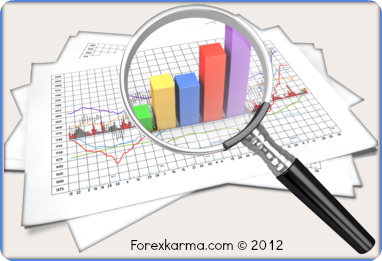
Capital Flows -How To Measure Currency Supply And Demand?
Capital flows measure the net amount of a currency that is being purchased or sold due to capital investments. It can be negative or positive.
It is positive when foreign investments into a country exceeds outflows.
It is negative when investments by domestic investors exceeds than foreign investors.
Capital flow can be categorized into physical and portfolio flows.
Physical Flows
Physical flows refers to actual cash flow that is involved during this process of transaction.
Since the inception of World Trade Organization (WTO) and Internet, direct foreign capital investment has become just a breeze through.
Any citizens/corporations in the U.S. can make direct capital investment in the booming telecoms industry in China or India.
Likewise, any citizens/corporation in China or India can make direct capital investment in the U.S. government securities due to the inherent safety they possess.
When global corporations such as Google makes acquisitions for Indian start up IT firm, it requires Google to sell the U.S. dollar since it's U.S. based company.
Next Google needs to buy the local Indian currency to pay for the acquisitions cost, which leads to movements in the forex market. This is particularly true when such acquisitions involve more cash than stock.
Portfolio Flows
Portfolio flows refer to capital flows in equity market (such as stocks) and fixed income market (such as bonds).
 Portfolio Flows
Portfolio Flows
Equity Markets
One of the greatest blessings of internet that I consider in my personal life is that it affords faster communication and transportation of money.
When I came to the U.S. for higher studies couple years back, I could communicate with my parents 7500 miles away in the Himalayas - video chat with them, talk to them and also ask for instant money transfer whenever I needed to pay the bills.
Fantastic right?
This is so true when it comes to investment.
If any traders/corporations/investors find out investment opportunities in any part of the globe, they can now participate in global equity markets just by click of a button.
Accordingly, a rallying equity market will entice global investors just as a skinny blue eyes blonde will attract all level of reproductive male in a busy bazaar.
This leads to strong correlation between a country's equity markets and its currency.
If the equity markets is in good health, investment dollar will flow to the country whereas sick economy will lead to poor performance in the equity market. This will ultimately fuel domestic investors as well as foreign investors to seek investment opportunities elsewhere abroad.
Fixed Income Markets
Fixed income markets refers to bond markets, specifically, international government bonds as these securities become more appealing to investors in time of global uncertainties due to inherent safety they offer.
Accordingly investors both domestic and foreign, who are true specimen of greed and fear, will naturally gravitate towards securities that will offer the highest return on their investment besides security.
For foreign investors, this process requires selling their local currency and purchasing the country's currency that they want to invest in. This process creates demand for the currency of the country where investors want to make their capital investment.
So do you see how demand and supply equilibrium gets interrupted by now?
Do you also see which way of demand and supply is weighing high and which way is weighing less?
It's absolutely imperative that forex traders understand this concept of capital flows very well to understand supply and demand for a specific currency.
So how would you employ ideas of capital flows in your trading?
-
Return to
- Capital Flows
- Forex Fundamentals
- Home









Have your say about what you just read! Leave me a comment in the box below.